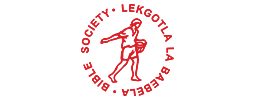The Division of the Land among the Tribes
1-7 The northern boundary of the land runs eastward from the Mediterranean Sea to the city of Hethlon, to Hamath Pass, to Enon City, to the boundary between the kingdoms of Damascus and Hamath. Each tribe is to receive one section of land extending from the eastern boundary west to the Mediterranean Sea, in the following order from north to south:
DanAsherNaphtaliManassehEphraimReubenJudahThe Special Section in the Center of the Land
8 The next section of the land is to be set apart for special use. It is to be 10 miles wide from north to south, and the same length from east to west as the sections given to the tribes. The Temple will be located within this section.
9 In the center of this section, a special area 10 miles by 8 miles is to be dedicated to the Lord. 10 The priests are to have a portion of this holy area. From east to west their portion is to measure 10 miles, and from north to south, 4 miles. The Temple of the Lord is to be located in the middle of this area. 11 This holy area is to be for the priests who are descendants of Zadok. They served me faithfully and did not join the rest of the Israelites in doing wrong, as the other members of the tribe of Levi did. 12 So they are to have a special area next to the area belonging to the Levites, and it will be the holiest of all. 13 The Levites also are to have a special area, south of that of the priests. It too is to be 10 miles from east to west, by 4 miles from north to south. 14 The area dedicated to the Lord is the best part of all the land, and none of it may be sold or exchanged or transferred to anyone else. It is holy and belongs to the Lord.
15 The part of the special area that is left, 10 miles by 2 miles, is not holy, but is for the general use of the people. They may live there and use the land. The city is to be in the center of it, 16 and it will be a square, 2,520 yards on each side. 17 All around the city on each side there will be an open space 140 yards across. 18 The land that is left after the city has been built in the area immediately to the south of the holy area—4 miles by 2 miles on the east and 4 miles by 2 miles on the west—is to be used as farmland by the people who live in the city. 19 Anyone who lives in the city, no matter which tribe he comes from, may farm that land.
20 And so the total area in the center of the section which was set apart will be a square measuring 10 miles on each side, and it will include the area occupied by the city.
21-22 To the east and to the west of this area which contains the Temple, the priests' land, the Levites' land, and the city, the remaining land belongs to the ruling prince. It reaches east to the eastern boundary and west to the Mediterranean Sea, and is bounded on the north by the section belonging to Judah and on the south by the one belonging to Benjamin.
Land for the Other Tribes
23-27 South of this special section, each of the remaining tribes is to receive one section of land running from the eastern boundary west to the Mediterranean Sea, in the following order from north to south:
BenjaminSimeonIssacharZebulunGad28 On the south side of the portion given to the tribe of Gad, the boundary runs southwest from Tamar to the oasis of Kadesh, and then northwest along the Egyptian border to the Mediterranean Sea.
29 The Sovereign Lord said, “That is the way the land is to be divided into sections for the tribes of Israel to possess.”
The Gates of Jerusalem
30-34 There are twelve entrances to the city of Jerusalem. Each of the four walls measures 2,520 yards and has three gates in it, each named for one of the tribes. The gates in the north wall are named for Reuben, Judah, and Levi; those in the east wall, for Joseph, Benjamin, and Dan; those in the south wall, for Simeon, Issachar, and Zebulun; and those in the west wall are named for Gad, Asher, and Naphtali. 35 The total length of the wall on all four sides of the city is 10,080 yards. The name of the city from now on will be “The-Lord-Is-Here!”
© Good News Translation® (Today’s English Version, Second Edition) © 1992 American Bible Society. All rights reserved.
